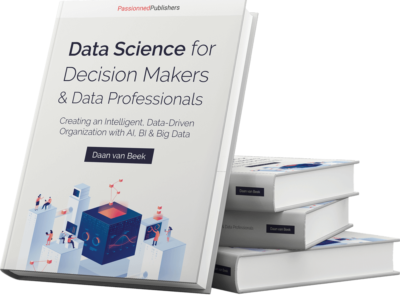It’s a matter of thinking around
From a top-down view, data-driven management enables the (necessary) transition from the management-driven style of improvement to actual data-driven improvement. Autonomous, entrepreneurial employees; short-lived, modern customer-focused strategies; and flexible structures are the contours of the intelligent, data-driven organization. These elements foster agility and adaptability, ensuring the organization can swiftly respond to changing market conditions. In short: how do you get from management-driven to data-driven continuous improvement? It involves cultivating a data-centric culture, investing in the right tools and technology, and enhancing data literacy across all levels of the organization.
Promote a culture of open feedback
To achieve a professional, high degree of organizational agility, you need an exceptional integration of systems. But you also need a culture of open feedback, a focus on customers, and the proactive sharing of information, knowledge, responsibilities, and results.
If the data says to go left, the boss can say whatever they want, but you go left
If you give people and teams insight into the available data, they can – with stronger arguments than managers – determine their own next steps. They can better determine their position and affect a more effective learning loop. By smartly using data, it’s easier to know where you are right now (current position) and what the effect of trying something different will be (learning loop).
A turning point within data-driven management
There’s a real turning point of thinking here: if the data says to go left, the boss can say whatever they want, but you go left. That’s the core principle of data-driven working and management. Our most important mission is giving back influence to the individual employees and craftspeople.
Differences between management-driven and data-driven organizations
Don’t
- Top-down
- Management-driven
- Separate thinking and doing
- Holding on and correcting
- Knowledge asymmetry
- Opinion-based
- Politically-colored information
- One big target
- Start from an untested idea
Do
- Bottom-up
- Data-driven
- Connect thinking and doing
- Learn and experiment
- Shared perspective
- Fact-based
- Objective information
- Many smaller targets (per demographic)
- Start with facts
When passion is missing
Management-driven means that everything you hear is infused with opinions and prejudices. That includes the conflicting (political) interests in the organization, meaning you have to go whichever way the wind blows. This kind of culture of papering over the cracks focuses on achieving low-hanging goals, instead of improving from the customer’s perspective. The passion and the focus are missing in these kinds of environments. People and customers are being led on.
In the case of data-driven management, practical data comes first. The numbers and events speak for themselves. No one can hijack reality and make things look better or worse than they are: the data is known and reflects reality.
Practical example
Every decision made by the International Bike Group, a winner of the Dutch Data Science & BI Award, is based on data. Whether it comes to the number of people they have to deploy per segment of the day in the call center, to the supply volume to be produced. That’s information the company already has before the supplier even delivers a bike. Davy Louwers, CFO of IBG, says: “By smartly using data, we noticed that the purchasing process of a regular bike and an e-bike look very different. The customer journey for an e-bike looks much more like buying a car than that of buying a normal city bike.”
This example demonstrates how data can be used to ensure that your activities match the consumer’s behavior. Having access to this kind of data enables you to:
- optimize your marketing funnel
- recognize the moment a potential customer becomes a qualified lead
- design your sales funnel much more effectively
 How does data-driven working fit into the context of the intelligent organization? How can you apply the principles of data-driven management in practice? This Business Intelligence book outlines how organizations should behave in order to reach the next level of BI maturity and achieve greater success in all areas.
How does data-driven working fit into the context of the intelligent organization? How can you apply the principles of data-driven management in practice? This Business Intelligence book outlines how organizations should behave in order to reach the next level of BI maturity and achieve greater success in all areas.
Gut feeling is taboo
The trick is to use data intelligently in all kinds of decision-making processes in the organization. This is how data-driven management can replace and improve human decision-making in many places in the organization. Going with the manager’s gut feeling can be a thing of the past. Finally, data mining algorithms will reveal unseen connections, allowing you to adjust your sales strategy. Strategies that until recently may not have been considered at all.
Data mining reveals surprising connections
For example, in America, a supermarket found out that a teenage girl was pregnant even before her parents did. Big data analysis revealed that pregnant women purchase more unscented shampoos and lotions, among other things. And because the girl started buying a different, odorless shampoo (combined with other data), the supermarket knew with over 70% certainty that the girl was pregnant. The marketeer started adjusting the mailings based on this, to the father’s great concern. That’s how data mining can reveal connections before anyone else can see them, including competitors.
The route from data to improvement
We’re closing out this blog with a last reflection on the case of a hotel chain. I have a strong suspicion that the hotel in question has a management-driven leadership style. Data-driven management could have seen that they got the same complaint four times in a year. The big question is: how can it be that there’s no learning loop? The next blog will cover this topic. Based on an extensive description of a practical case, we’ll show you how to get from data to improvement.



